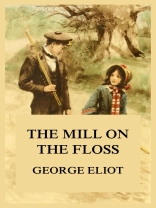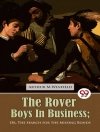In the ‘Mill on the Floss’ the persons on whom the chief interest is supposed to depend are Tom and Maggie Tulliver, the children of a rough, honest, hot-tempered, obstinate, litigious miller. Old Tulliver is ruined by a lawsuit about ‘erigation, ‘ and has a stroke of paralysis, from which he recovers so far as to carry on the management of the mill under the new owner, Wakem, a lawyer whom he regards as the cause of his misfortunes. But, although determined to serve Wakem faithfully, he makes a solemn resolution of vengeance against him and his, and causes Tom to record it in the family Bible. Tom suits himself to the change of circumstances, and, by means of his aunt’s husband, Mr. Deane, who is a partner in the firm, he finds employment under Guest and Company, the principal merchants in the neighbouring town of St. Ogg’s. After a few years, by means of Tom’s earnings and his father’s savings, the Tulliver creditors are paid in full; but the old miller, in returning triumphant from a dinner given on the occasion, falls in with his master and enemy Wakem, quarrels with him, horsewhips him, and dies of the excitement and exertion…
A propos de l’auteur
Novelist, was b. near Nuneaton, Warwickshire, dau. of Robert E., land agent, a man of strong individuality. Her education was completed at a school in Coventry, and after the death of her mother in 1836, and the marriage of her elder sister, she kept house for her f. until his death in 1849. In 1841 they gave up their house in the country, and went to live in Coventry. Here she made the acquaintance of Charles Bray, a writer on phrenology, and his brother-in-law Charles Hennell, a rationalistic writer on the origin of Christianity, whose influence led her to renounce the evangelical views in which she had been brought up. In 1846 she engaged in her first literary work, the completion of a translation begun by Mrs. Hennell of Strauss’s Life of Jesus. On her f.’s death she went abroad with the Brays, and, on her return in 1850, began to write for the Westminster Review, of which from 1851-53 she was assistant-editor. In this capacity she was much thrown intopage 132 the society of Herbert Spencer and George Henry Lewes (q.v.), with the latter of whom she in 1854 entered into an irregular connection which lasted until his death. In the same year she translated Feuerbach’s Essence of Christianity, the only one of her writings to which she attached her real name. It was not until she was nearly 40 that she appears to have discovered the true nature of her genius; for it was not until 1857 that The Sad Fortunes of the Rev. Amos Barton appeared in Blackwood’s Magazine, and announced that a new writer of singular power had arisen. It was followed by Mr. Gilfil’s Love Story and Janet’s Repentance, all three being reprinted as Scenes from Clerical Life (1857); Adam Bede was pub. in 1859, The Mill on the Floss, in its earlier chapters largely autobiographical, in 1860, Silas Marner, perhaps the most artistically constructed of her books, in 1861. In 1860 and 1861 she visited Florence with the view of preparing herself for her next work, Romola, a tale of the times of Savonarola, which appeared in 1863 in the Cornhill Magazine. Felix Holt the Radical followed in 1866. Miss E. now for a time abandoned novel-writing and took to poetry, and between 1868 and 1871 produced The Spanish Gipsy, Agatha, The Legend of Jubal, and Armgart. These poems, though containing much fine work, did not add to her reputation, and in fact in writing them she had departed from her true vocation. Accordingly, she returned to fiction, and in Middlemarch, which appeared in parts in 1871-72, she was by many considered to have produced her greatest work. Daniel Deronda, which came out in 1874-76, was greatly inferior, and it was her last novel. In 1878 she pub. The Impressions of Theophrastus Such, a collection of miscellaneous essays. In the same year Mr. Lewes d., an event which plunged her into melancholy, which was, however, alleviated by the kindness of Mr. John Cross, who had been the intimate friend of both L. and herself, and whom she m. in March, 1880. The union was a short one, being terminated by her death on December 22 in the same year.












